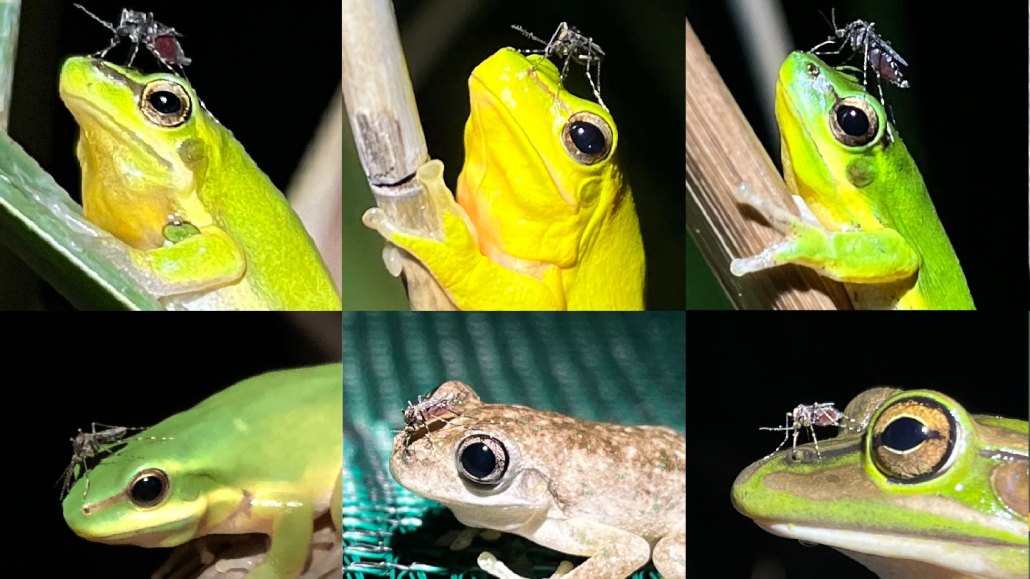
One species of Australian mosquito (Mimomyia elegans) seems to have a predilection for feeding off the nostrils of several species of tree frog (pictured).
J. Gould
An Australian mosquito species knows the best spot to drink its bloody meals: a frog’s nostril.
The bloodsuckers are surprisingly selective when dining on frogs, seemingly picking no other place on the body to feast, researchers report November 21 in Ethology. Frogs’ sniffers may be an easy and productive place for the mosquitoes to pierce the thin skin and drink up. The new finding could one day help scientists better understand the transmission of some frog diseases.
Behavioral biologist John Gould discovered the nostril-nibbling insects while studying frogs in ponds on Australia’s Kooragang Island. From 2020 through 2022, Gould occasionally noticed mosquitoes on the faces of the frogs he was surveying and would take photos.
“It was only once I laid out all the photos together that I realized something very particular and surprising was happening,” says Gould, of the University of Newcastle in Callaghan, Australia. In the 12 photos that Gould took of mosquitoes on frogs, every single bloodsucker was feeding on the skin of the frog’s nostril.
Some mosquitoes feed only on frogs and toads but bite various parts of the body. The mosquito that caught Gould’s eye, Mimomyia elegans, has a generalized diet of amphibians, mammals and birds. “Yet its feeding strategy when using frogs appears to be highly specialized,” Gould says.

The nostril skin may be especially soft and thin, making it easier for the mosquito’s biting mouthparts to pierce, Gould says. Alternatively, he notes, there could be a high density of blood vessels near the surface of the nostril skin.
Dining at this venue on a renowned insect eater is risky, considering the nostrils rest just above a powerful, sticky tongue (SN:10/5/22). But the mosquitoes might have a stealthy work-around. Gould observed some of the mosquitoes landing on the frogs’ backs first before carefully walking up toward the head. This, he says, might keep them from being detected and eaten.
Gould and colleagues have shown in previous work that mosquitoes may be vectors for amphibian chytrid fungus, a grave threat to amphibians globally. “Determining where exactly mosquitoes land and subsequently feed on frogs may allow scientists to better understand the spread of the infection across the skin surfaces of frogs,” he says.
Some of the photographed mosquitoes were feeding on green and golden bell frogs (Litoria aurea). Those frogs are considered vulnerable to extinction, in part due to habitat loss, by the International Union for Conservation of Nature.
A laboratory experiment to carefully watch frogs and mosquitoes to confirm the insects’ nasal predilections would be helpful, says Manuela Carnaghi, an insect behavioral ecologist at the University of Greenwich in Chatham, England, who was not involved with the study.
Determining precisely how mosquitoes target and bite multiple kinds of hosts is key for understanding disease transmission in animals, Carnaghi says. It’s particularly important, she says, when considering the ability of a mosquito-borne pathogen or parasite to jump between different species.






